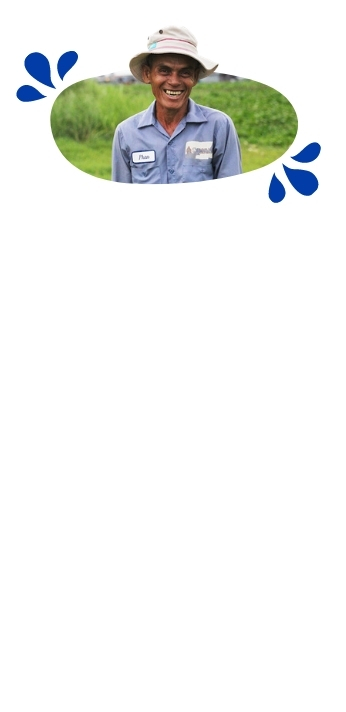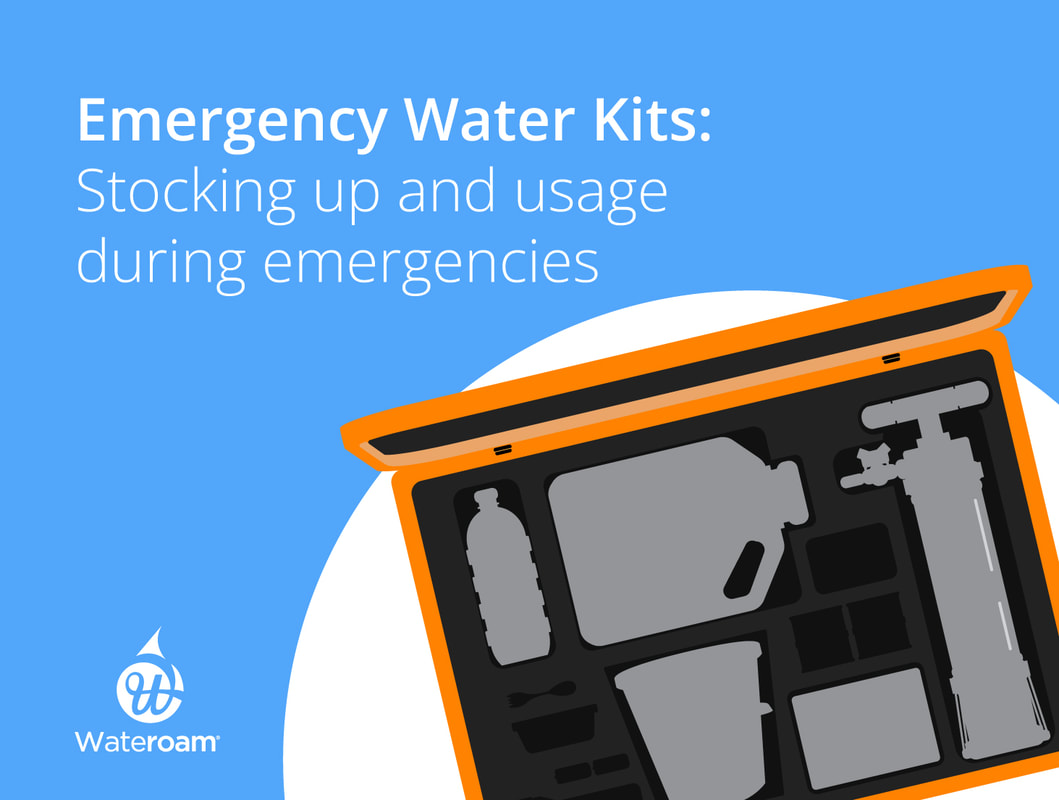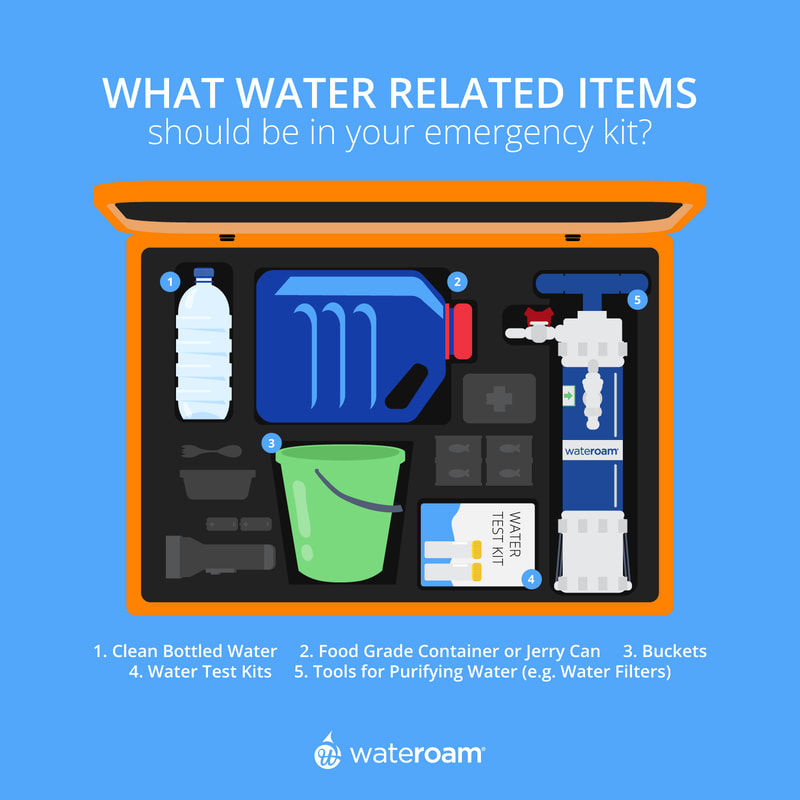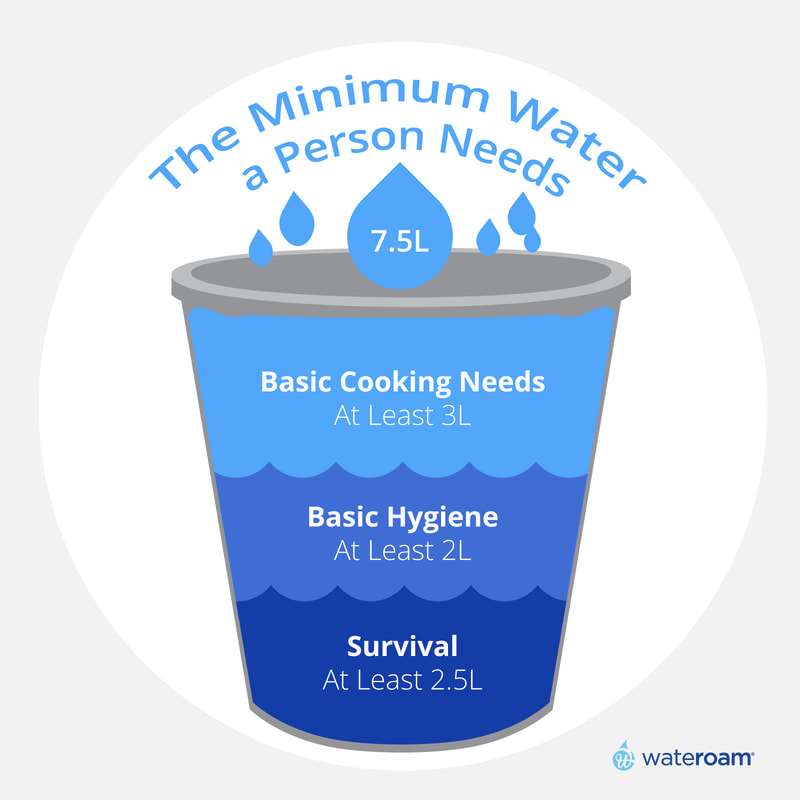Emergency water kits: Stocking up on water supplies for crisisThe Importance of Water in Emergency KitsFloods, typhoons, earthquakes and landslides. These are just some of the disasters common in Pacific ring of fire countries like Indonesia and the Philippines. These disasters do great damage to surrounding areas and also contaminate water supplies. Having emergency kits ready in your home can help your family maintain their health and safety. In the Philippines, typhoons hit the country an average of 18 to 20 (1) times a year on average. Indonesia rests between 3 tectonic plates and faces (2) earthquakes, tsunamis, volcanic eruptions, floods, landslides, droughts and forest forest with 40% of the country at disaster risk at any given moment. And yet, people in these countries show resilience (3) time and time again - they pick themselves up, rebuild and keep moving forward. Emergency kits can help them to bounce back faster and with less risk to their families’ health and safety. When water shortages occur you need enough clean water for you and your family to (4):
1. What Should Be in the Emergency Kit?Your emergency water kit should include the following items:
Other emergency kit items you may want to stock up on other than those related to water, which can be stored in ready-to-go emergency backpacks or ‘Go-Bags.’
But what is just as vital as the Go-bag is your emergency water supply. The human body can survive without food for 2 - 3 months if you have water, but people can only live for 3 days without water. How Much Water Should I Keep in My Kit?The recommended amount of water the average person needs, including for drinking, sanitation and hygiene is 15 litres of water per person per day. This recommendation comes from the Sphere standards (5) which has been endorsed by the UNHCR (6). This includes 2.5-3 litres for drinking, 2-6 litres for hygiene, and 3-6 litres for cooking. Remember, water quantity for hygiene and cooking depends on local practices.
You can also find the water usage guidelines for various facilities in our water facts page. Try to store at least 15 litres of water per person per day for at least 3 days. At the minimum you’ll need to have 4.5 litres (1 gallon) of water per person per day for at least 3 days. Example: If your family has 5 adults and you want to store water for 3 days.
How Should I Store My Water Using My Water Kit?Before an emergency happens, you can stock up on bottled water or you can store water in jerry cans or food grade containers. If you are keeping bottled water, remember to check the expiry date of the water. Disposable plastic bottles can eventually break down, develop holes, and leak so it’s best to change out the bottles after 24 months (7). If you are keeping water in cans or food grade containers, ensure they are approved by the authorities such as the Philippines’ Food and Drug Administration (8) or Indonesia’s Agency for Drug and Food Control (Badan POM) (9) to ensure that no toxic substances will be transferred to the water. You’ll need to keep your water in a cool and dry place. This is because heat and light may cause algae to form in your water, making it unusable. If you are keeping water in food grade containers, ensure that your containers are disinfected before storing water. To disinfect the containers, the Centre for Disease Control and Prevention recommends that you:
2. Where to Find Items for Your Emergency KitsDIY Supplies: DIY Shops and Camping ShopsMost of the items you need for your emergency kits can be found in DIY shops and camping shops, like Mr. DIY and Decathlon in Indonesia and Campinggears or DIY Hardwear or Mr. DIY in the Philippines. You can find most of your gear like whistles, sheets, portable stoves, utility knives, ropes and torchlights here. One of the most vital items here is buckets and containers for water. Sanitation and Medical Items: PharmaciesRemember to stock up on medicine and first aid kit supplies for your family members including medicine for children or the elderly in your home. First aid kits can also be found in pharmacies. Portable Water Filters and Water Test Kits: Suppliers like WateroamIt bears repeating that when buying water filters, ensure that you buy one with filter pores that are small enough to filter out most bacteria and parasites. You’ll also want to buy water test kits to help you test nearby water supplies when the need arises. Filters are able to filter out 99.9999% bacteria and 99.99% viruses and can be hand-operated or connected to an existing pipeline and doesn’t need electricity to operate. When it comes to emergency preparedness it’s better to be over prepared than underprepared and to be a warrior in a garden rather than a gardener in a war. We at Wateroam hope that you’ll find this guide to preparing your emergency kits useful in keeping your family safe and healthy. (1) World Data - Recent typhoons in the Philippines
(2) Indonesia - Vulnerability | Climate Change Knowledge Portal (3) The Spirit of Being Resilient in Filipino Culture - Bisaya Podcast (4) Manila-Philippine Water Crisis in International Perspective - IssueWire (5) The Sphere Handbook | Standards for quality humanitarian response (6) Emergency water standard | UNHCR (7) Primal Survivor - How to Safely Store Water for Emergencies (Short and Long Term Options) (8) Philippines Food and Drug Administration (9) Badan POM
0 Comments
|
Want more?Click below to see what other blog topics might peak your interest. 


|
- About Us
- Products
- Solutions
- Resources
- Get Involved
-
Blog
- The Global Water Situation
-
Facts about Water
>
- Water supplies for crisis
- WaSH During Emergencies
- Well Water Cleaning and Filtration Guide: Southeast Asia
- Gravity-fed Water Systems: Water Purification and Filtration setups in Southeast Asia
- A Guide to Rural Rainwater Harvesting and Filtering
- Water Shortages and Their Effect on Children in Rural Schools
- WaSH Planning and Design Framework Resources for Indonesia and the Philippines
- Rural Community Water Supply: Water Systems in Villages
- Info on our Products
- Impact Stories
- Upcoming & Past Events
- Contact
- Store
- About Us
- Products
- Solutions
- Resources
- Get Involved
-
Blog
- The Global Water Situation
-
Facts about Water
>
- Water supplies for crisis
- WaSH During Emergencies
- Well Water Cleaning and Filtration Guide: Southeast Asia
- Gravity-fed Water Systems: Water Purification and Filtration setups in Southeast Asia
- A Guide to Rural Rainwater Harvesting and Filtering
- Water Shortages and Their Effect on Children in Rural Schools
- WaSH Planning and Design Framework Resources for Indonesia and the Philippines
- Rural Community Water Supply: Water Systems in Villages
- Info on our Products
- Impact Stories
- Upcoming & Past Events
- Contact
- Store





.jpg)